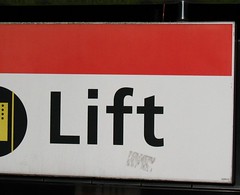 |
| metal detecting for lead pipes DSCN9450 (Photo credit: DrJohnBullas) |
It seems one of the things that is always with us is
lead. Heavy, dull, dark, like that blind date your former friend fixed
you up with last month, lead is always around and hard to get rid of. In
the seventies lead paint was finally recognized as the health hazard it was and
children were tested for lead poisoning. It was mostly the ones who ate
paint chips that were at risk. I know what some of you cruel and
heartless types are thinking. “If they are dumb enough to eat paint chips maybe
it is just nature’s way of thinning out the weak minded and a good case
for natural selection.” Sheesh you are probably the same people
who say things like, “Then let them die and decrease the surplus
population.” Enough of that and let’s get back to the point, lead.
You would think that after all these years everyone would
have gotten the idea that lead is not real great stuff to put in paint,
particularly paint that is going to be used on toys, handled by children.
Enter the Chinese. Perhaps in China, a country with a serious
overpopulation problem, lead painted toys are seen as social engineering
and heartily endorsed, but maybe they should have run the idea by the American
consumers before they sent us toys painted with toxic paint for our
children. Now let’s be honest, anyone who has ever been on a long flight
with a crying baby in the next seat, or tried to have a meal in a restaurant
with a bratty kid at the next table, has probably been tempted to give the
little nippers a lead painted toy, but we really wouldn’t do it, it’s just a
fleeting thought. For every person who thought of buying a lead paint
tainted toy for a particularly obnoxious child there are millions who are
appalled by the idea of toxic toys.
The same can probably be said of the millions who were
appalled when it was discovered that certain
Firestone tires were exploding and
causing terrible accidents. Oh sure, there were a few people at the time
who had been contemplating divorce who saw the idea of putting Firestone tires
on their spouse’s car as a cheap alternative to divorce, but they were a very
small minority. The point is, we consumers do not want dangerous things,
like lead, in our products.
This brings me to another point, and that is that sometimes
something like lead can be a bad thing in one place and a good thing somewhere
else. For instance, lead in a pencil is a good thing, although it is
actually graphite. When I was a teenager I used to eat at a little diner
in
Rhode Island. The waitress, very kindly and motherly, would always
make sure I had a large helping of the special and on more than one occasion
told me it would put lead in my pencil. Apparently she realized that at
that stage in my life I had decided to become a writer, although the twinkle in
her eye seemed to indicate she was interested in more than my writing career.
So sometimes lead is good and sometimes it is bad. If
you are worried about lead paint and other toxic substances in your products,
rather than asking your favorite waitress for advice, perhaps you should visit
a site like Safe Toys Info Where you will find information about safe toys
and other consumer products too numerous to mention here.
In the meantime, may your children always be safe and may
your pencil always be full.























